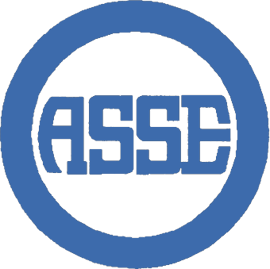All Safe-T-Cover enclosures meet industry standards,
giving you peace of mind for backflow protection.
All Safe-T-Cover enclosures meet industry standards,
giving you peace of mind for backflow protection.
In 1996, the American Society of Sanitary Engineering released a new standard to regulate the budding backflow enclosure industry: ASSE 1060. Enclosures built before 1996 may  have had too little or too much insulation, or heaters that weren't safe. Sometimes they were simply a fiberglass box placed on top of valves. Before 1060 was released, drainage was as much a problem with enclosures as it is today for RPZ backflow preventers installed indoors. It's especially interesting that Plumbing Standards Magazine was publishing information on RPZ discharge rates and the dangers of confined spaces in 1996, and these are the same problems we're facing today.
have had too little or too much insulation, or heaters that weren't safe. Sometimes they were simply a fiberglass box placed on top of valves. Before 1060 was released, drainage was as much a problem with enclosures as it is today for RPZ backflow preventers installed indoors. It's especially interesting that Plumbing Standards Magazine was publishing information on RPZ discharge rates and the dangers of confined spaces in 1996, and these are the same problems we're facing today.
The standard has since been updated: once in 2006, adding more detail to the testing. It also clarified that equipment enclosures designed for "fluid conveying components" need to pass this threshold, not just "backflow preventer enclosures". It was updated again in 2017, changing the requirements for heaters, and adding testing requirements.
The ASSE recommends these enclosures are installed in a way that conforms to local codes, most of which require covers to be ASSE certified. Products can only be ASSE approved if the manufacturer has applied to the ASSE and had their product tested in ASSE's lab. The process can take up to 60 days and, in 1996, it could cost up to $25,000. Once the product has passed the test, as Safe-T-Cover's products have, they gain a seal of approval. Here's what that approval means.
1.0 Classifications
Class I Freeze Protection Enclosures Heated
Enclosures designed and constructed to maintain a minimum internal temperature of 40°F with an external temperature of -30°F with a minimum thermal resistance (R) value of eight (8.0).
Class I-V Freeze protection enclosures for pressure and atmospheric vacuum breakers.
Class II Freeze Retardant Enclosures may or may not have a Heater
Enclosures designed and constructed to maintain a minimum internal temperature of 40°F for a 24-hour period with a minimum thermal resistance (R) value of eight (8.0).
Class II-V Freeze protection enclosures for pressure and atmospheric vacuum breakers.
Class III Non-Freeze Protection Enclosures No Heat
Enclosures designed and constructed without freeze protection and have no minimum thermal resistance (R) value.
Class III-V Non-Freeze enclosures for pressure and atmospheric vacuum breakers.
2.0 Structural Strength
All classification enclosures must be designed to support a minimum vertical load of 100 pounds per square foot (100 psf). See our infographic for reference.
3.0 Drainage Capability
All classification enclosures must be designed to discharge water from within the enclosure to prevent equipment submersion. The depth of water rise within the enclosure shall not exceed eight inches during full discharge of a reduced pressure zone (RPZ) backflow preventer and in accordance with the following diameter requirements:
| Diameter | Backflow Preventer Enclosure Drain Capability (GPM) |
| ¼" to ½" | 27 GPM |
| ¾" to 1" | 45 GPM |
| 1 ¼" to 2" | 155 GPM |
| 2 ½" to 3" | 260 GPM |
| 4" and above | 710 GPM |
4.0 Access for Testing and Maintenance
Equipment components, such as test cocks and valve handles or hand wheels, must be within 24 inches of the access opening.
Hinged access panels must be restrained in the open and closed position.
All unrestrained panels and horizontal hinged panels can weigh no more than 70 pounds.
5.0 Security and Vandalism
Access to the internal equipment shall be lockable. Access shall be by keyed devices or have the ability to affix padlocks.
6.0 Materials of Construction
Exposed Exterior Wall Panel Materials
© 2024 by Hydrocowl, Inc. All Rights Reserved.
Terms & Conditions | Privacy Policy